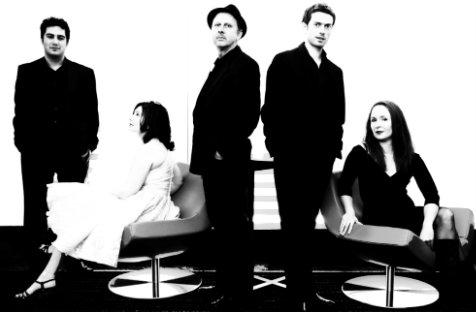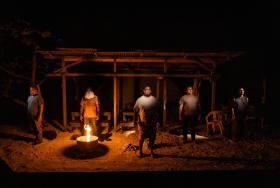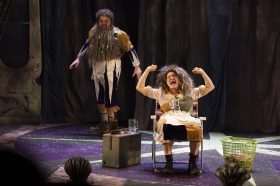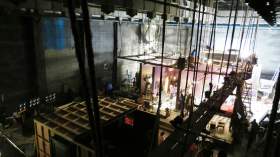Evocative: one word that sums up tango, both the music and the dance. Tango is romantic and exotic, tender yet full of bravado, sentimental yet sensual. The music is highly expressive, its rhythms mesmerising, and its dance cheek-to-cheek.
So it was with some anticipation that I went to see Melbourne-based classical mandolin player Ruth Roshan and her quartet Tango Noir launch Roshan’s second album, Darling … Keep it to Yourself at the Mullumbimby Drill Hall, just outside Byron Bay.
Roshan and Tango Noir play a mix of classical and tango-infused pieces, and the band features some very accomplished players on violin, cello, piano and accordion.
Tango first came to notice in the brothels of Buenos Aires in the 19th century. It’s thought that the working class form of music became popular when brothel owners began employing musicians to distract men waiting in line at brothels.
Ruth Roshan fell for tango in her early 20s and began composing music that was infused with its inflections and atmosphere some time later. Her latest album is a collection of originals, some with lyrics, others instrumental, and featuring Roshan (mandolin), Amir Farid (piano), Phil Carroll (accordion), Aaron Barden (violin) and Caerwen Martin (cello).
Sadly, Tango Noir’s first set at the intimate Drill Hass was marred by a terrible sound mix. Feedback hissed whenever Roshan picked up her mandolin and the foldback level on stage was obviously so inadequate that Roshan could barely hear her vocals, which came across as muddy, mumbled and slightly flat.
Tunes like ‘Song of Hope’ and ‘Softly Playing Songs for Lovers’, which are reasonably successful on CD, were lost in the mix on the night. It’s too easy to blame the sound guy but tonight, the blame was warranted.
It was pure relief for audience and performers when the show went acoustic for the show’s second half. Now we could hear each instrument, from the mandolin’s tremolo, the cello’s heartbeat, the violin and accordion’s bittersweet melodies and Roshan’s vocals. Her version of Grace Jones’ ‘Libertango (I’ve Seen that Face Before)’ was engaging, if a little chaotic in parts.
That said, Ruth Roshan is an unlikely lead singer and the lyrical songs were the weaker moments in the night. Singing is not a skill that appears to come naturally to the musician, yet tango demands the singer be completely at home with the genre.
Roshan needs to overcome her self-consciousness and unleash her inner chanteuse. She needs to unlock the charm, confident patter and emotional intensity that are commonly a lead singer’s trademarks or remain the bandleader and find a remarkable singer who can.
Hence why the night’s highlights were the instrumentals – both Roshan’s originals and covers, particularly those of Astor Piazzolla, the father of the more modern Nuevo Tango style.
Without the distraction of the vocals, the instrumentals wove their atmospheric magic on the packed audience, as the first good rains in three months fell on the roof of the rustic Drill Hall. The staccato beats of cello and mandolin, and the soaring violin and the countering melodies of the accordion rode out the rainstorm to jazz-inflected piano rhythms.
While Ruth Roshan and Tango Noir probably would not tick off the gig as one of their best, last Friday night’s CD launch had its share of delights. At its best it conjured up the romance of 19th century Buenos Aires and for moments, I was transported.
Rating: 2 stars out of 5
Ruth Roshan & Tango Noir
Mullumbimby Drill Hall, NSW
9 November





